One thing the Chicago & North Western Ry. did particularly well was provide seasonal passenger service to the North Woods vacation grounds of northern Wisconsin and the Upper Peninsula of Michigan. Kato’s new N scale release depicts the North Western’s most popular Streamliner, the Peninsula 400, in its 1958 makeover with all-Pullman bi-level rolling stock. This attractive train set includes five cars and an Electro-Motive Division E8 locomotive with the option to add an additional engine to complete the consist.
The prototype. In 1942 the Chicago & North Western introduced its Peninsula 400 streamliner service between Chicago and Ishpeming, in Michigan’s Upper Peninsula. Trains No. 209 and 214 covered this distance, via Milwaukee and Green Bay, in 7 hours and 20 minutes.
In 1958, the CNW upgraded the Peninsula 400, Green Bay 400, and Flambeau 400 with 13 new bi-level cars, built by Pullman-Standard. The order called for 10 coaches, one parlor, one combination parlor/coach, and a coach/tap lounge car. The railroad rounded out the new 400 fleet with two diners, a Railway Post Office/baggage/tavern car, and a baggage/tavern/lunch counter car by having Pullman rebuild 1941 streamliner cars and install false roofs to match the height of the bi-levels.
Although the new cars were similar in appearance to the Pullman 161-seat bi-level commuter cars the CNW had purchased in 1956, there were many differences. The new coaches featured 96 reclining seats and luggage accommodations. All the cars were also designed to use Head-End Power (HEP), making them 5,000 pounds lighter than their commuter counterparts.
To lead the new cars, CNW modified four EMD E8 locomotives (5021 A/B and 5022 A/B) and two F7s with Cummings HEP systems.
After increasing cutbacks to services in the mid-1960s, the Peninsula 400 ceased operation between Green Bay and Ishpeming in July 1969, replacing that part of the service with buses. All but one of the 1958 long-distance bi-levels went to Amtrak in 1971.
How it’s built. Kato’s 400 train set includes five Pullman-Standard bi-level cars and a single EMD E8 locomotive and comes in a bookcase-style presentation box. Kato also offers an additional E8 for separate sale, and the foam liner inside the presentation box has a ready-made spot for it. The models are decorated in the simplified CNW green-and- yellow paint scheme appropriate for its late 1950s Streamliner-era trains.
The set’s passenger cars include two 96-seat long-distance coaches; a 60-seat parlor car; and a 48-seat coach/32-seat buffet lounge. The set also includes a 1960-built 155-seat Pullman commuter cab coach. This wasn’t part of the initial configuration of the Peninsula 400 but was used in the final days of service, when the CNW ran the Milwaukee-to-Chicago segment in push-pull fashion.
All five cars feature plastic and metal construction and are cleverly assembled without screws using interlocking tabs. Other than road numbers, the exteriors of the coaches and the parlor car were identical, and the same is true with Kato’s models.
The coach/buffet car was unique. The kitchen end had a single service door that replaced one lower window and a pair of shortened gallery windows. Kato has reproduced these details faithfully.
The cab coach has the correct windows and end details on the end with the engineer’s compartment. Check out the photo on the upper right corner of this month’s cover.
The dimensions closely match the original 1958 and 1960 Pullman drawings for these cars. Most of the details, such as grab irons, doors, cabling, and air tanks are cleanly molded into the body shell and chassis. The cars come with separately applied, non-working diaphragms, and the cab car has separately applied end ladders and airhorn.
The models also feature good renditions of the prototype cars’ 41-HL-11 (CIB) low-profile trucks. These include truck-mounted Kato magnetic knuckle couplers, allowing the cars to negotiate Kato’s tightest Unitrack radius, 9¾”.
The bi-levels include identical molded interior seat inserts, but the castings are representational of commuter car seating; Kato has made no distinctions between the unique parlor, coach, and buffet seating arrangements. The inserts do, however, make it simple to add figures (sans legs) to give the cars some life. Kato sells an easy-to-install interior LED lighting kit no. 11-211 for its bi-levels. Power is collected through each car’s eight metal wheels.
The cab car includes a directional lighting circuit that can be activated using a small slide switch located under the car. It’s for use with direct-current (DC) power. When the train is running cab car forward, the LED headlight is lit. When running at the tail of the train, the red markers light. The circuit can be switched to Digital Command Control operation by installing a Kato FL12 lighting decoder.
Motive power. The EMD E8A locomotive with the 400 set is decorated for engine 5022A, one of four E8 locomotives the C&NW upgraded in 1958 by replacing its steam generator with a Cummings HEP generator to provide power to the all-electric bi-level consist.
The model comes with a detailed body shell and includes a few key North Western spotting features, such as two winterization hatches (one for each 567 diesel engine) and blanked-out number boards. I was also impressed with the finely molded grills, and I had to look closely to determine that they weren’t photo-etched parts. Unfortunately, the rear portion of the rooftop on the locomotive’s shell still depicts a steam generator configuration, and not the vents found in prototype photos of C&NW’s HEP-converted E units.
The model’s 5.1 ounce heft comes from its sizeable die-cast metal frame, filling nearly the entire locomotive shell. All 12 wheels pick up track power, and the drive train includes two flywheels. The samples ran smoothly on DC power in both forward and reverse. A single E8 has a 1.6 ounce drawbar pull equivalent to 12 N scale passenger cars on straight, level track – far more power than will be required for this small 5-car train.
The E8 is available as a DC-only model or with a factory-installed DCC decoder with or without sound and a speaker. You could easily convert a Kato DC-only E8 to DCC yourself, using a Digitrax DN163K0A or Train Control Systems K0D8-E board-replacement motor decoder. Adding sound would require a bit more work.
Impressions. Kato’s Chicago & North Western 400 is a unique set, to be sure. While the inclusion of the coach/buffet is a nice touch, I would’ve also liked to have seen Kato offer extra coaches and one of the rebuilt 1941 cars, such as the false roof diner or the RPO/baggage/tavern car to round out the train a bit more.
However, don’t be fooled into thinking this set is strictly for the C&NW fan. Although the equipment spent its first 13 years on a host of trains running between Chicago, Milwaukee, and destinations throughout northern Wisconsin and Michigan’s Upper Peninsula, the equipment outlived long-distance passenger travel on the North Western by more than a decade. Throughout the 1970s and early 80s, all but full parlor car no. 6400 went on to serve various Midwestern Amtrak trains, including the Illinois Zephyr, the Black Hawk, and the Calumet, to name a few. For greater reach, you could repaint this set for Amtrak, or possibly Kato will offer a similar set in the future.
Manufacturer
Kato USA, Inc.
100 Remington Rd.
Schaumburg, IL 60173
katousa.com
Road names
Chicago & North Western Ry.
Era: 1958 to 1971
Features
• Locomotive features
• Precision motor with flywheels
• Metal wheels in gauge
• DCC ready
• Weight: 5.1 ounces
• Five-car passenger train consist
• Cab car and locomotive had directional LED headlight
• Kato magnetic knuckle couplers mounted at correct height
• Metal wheelsets in gauge
• Weight: 1.2 ounces each, .2 ounce light per NMRA RP-20.1





 Kato USA N scale Chicago & North Western Peninsula 400
Kato USA N scale Chicago & North Western Peninsula 400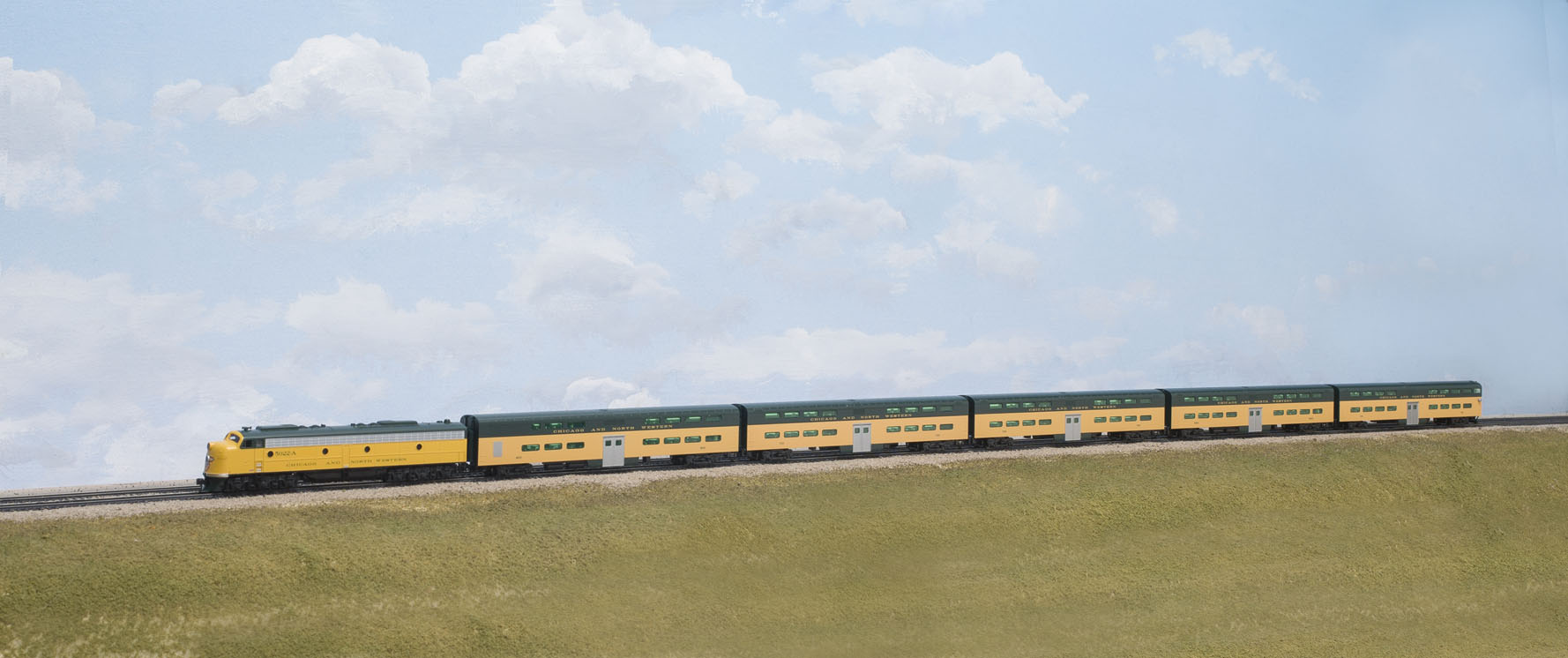
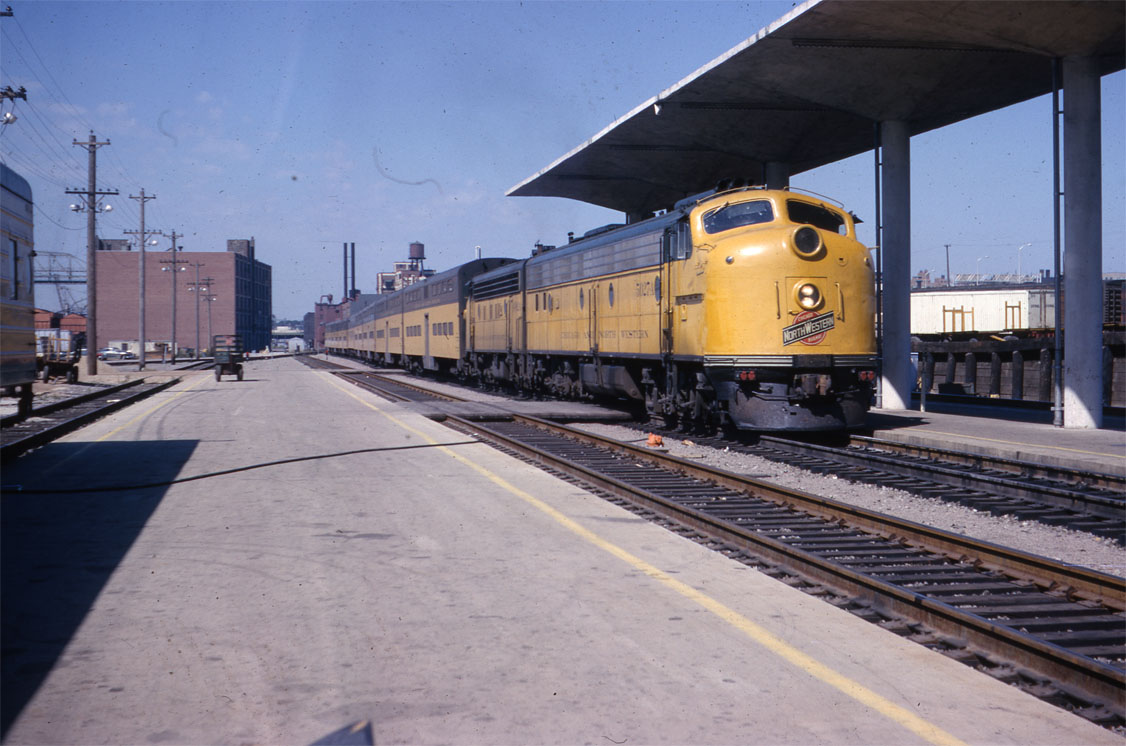
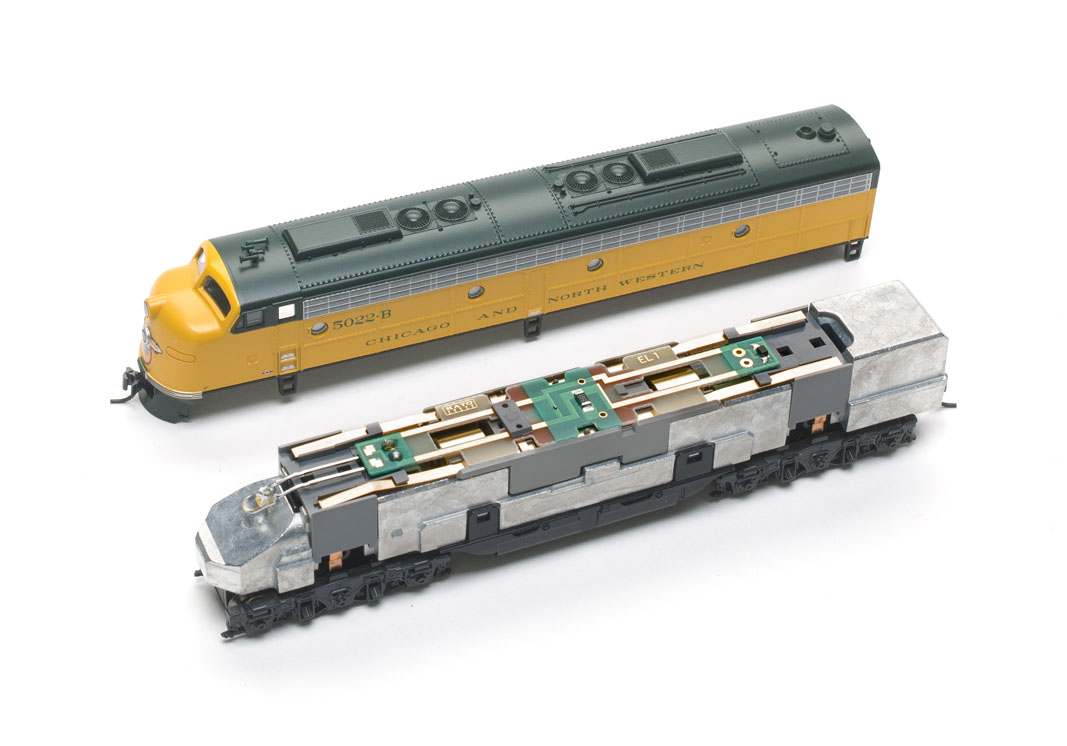
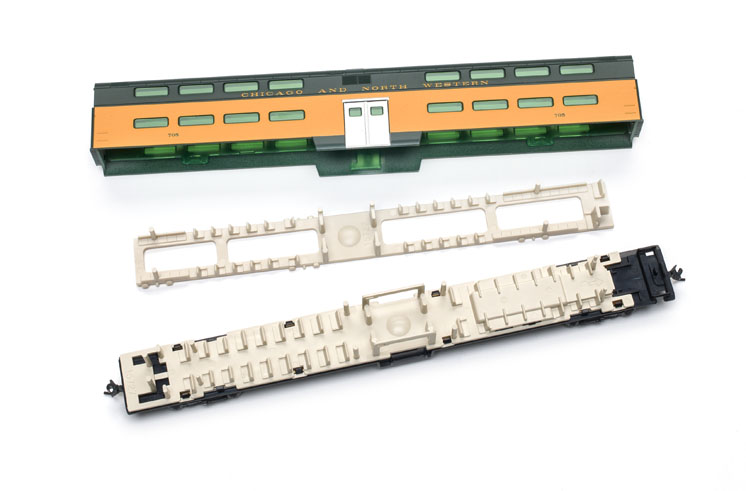
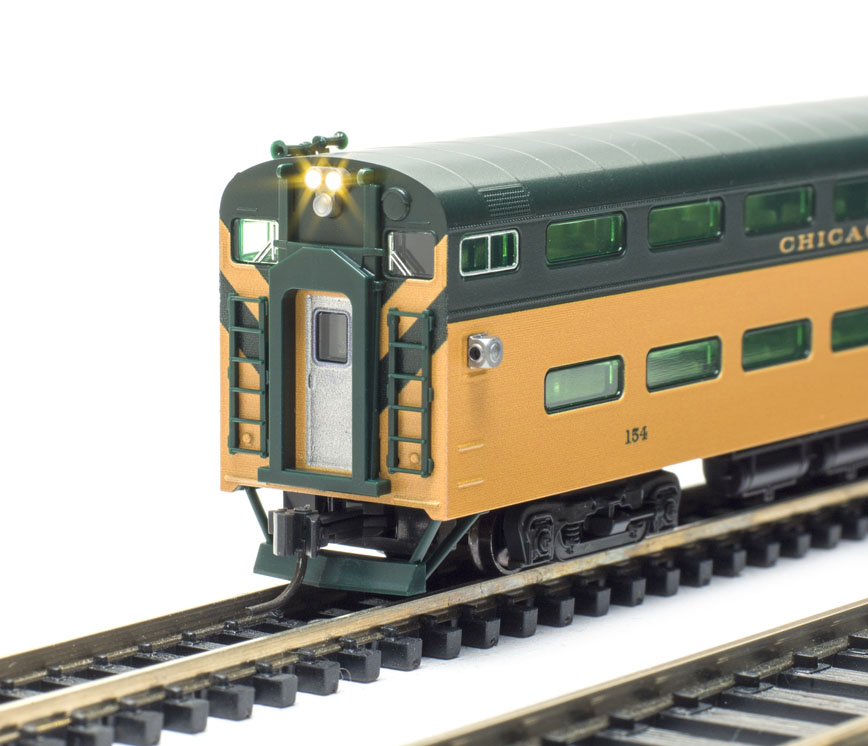
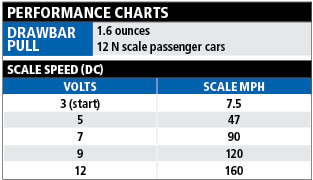




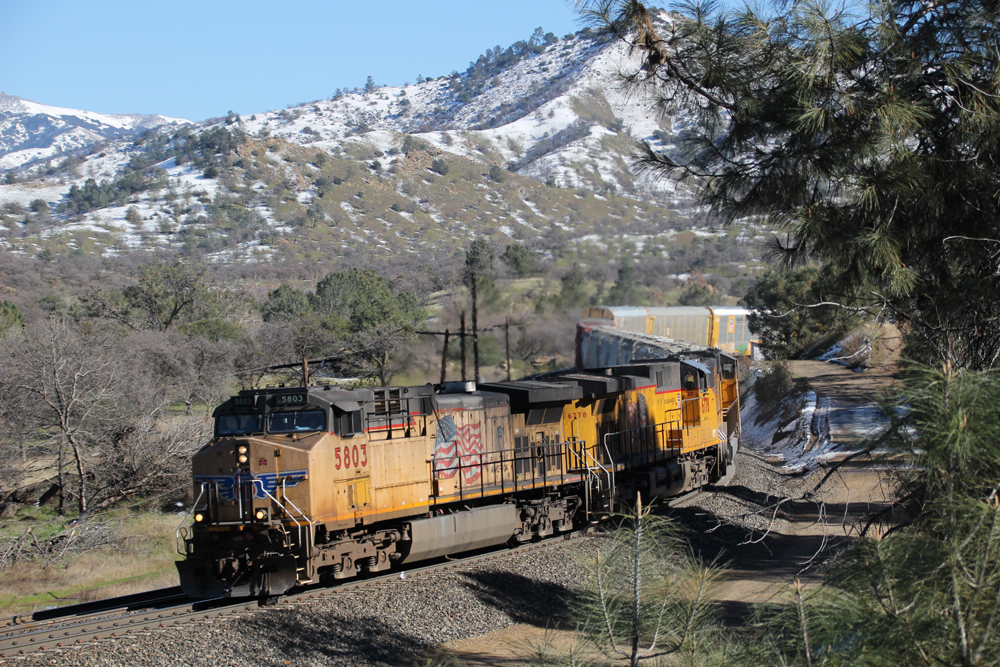




fun Fact CNW 5022A is no located in Chandler Arizona as MREX 97 E8A and or FEC 97. It has been stripped of paint and is now just silver.